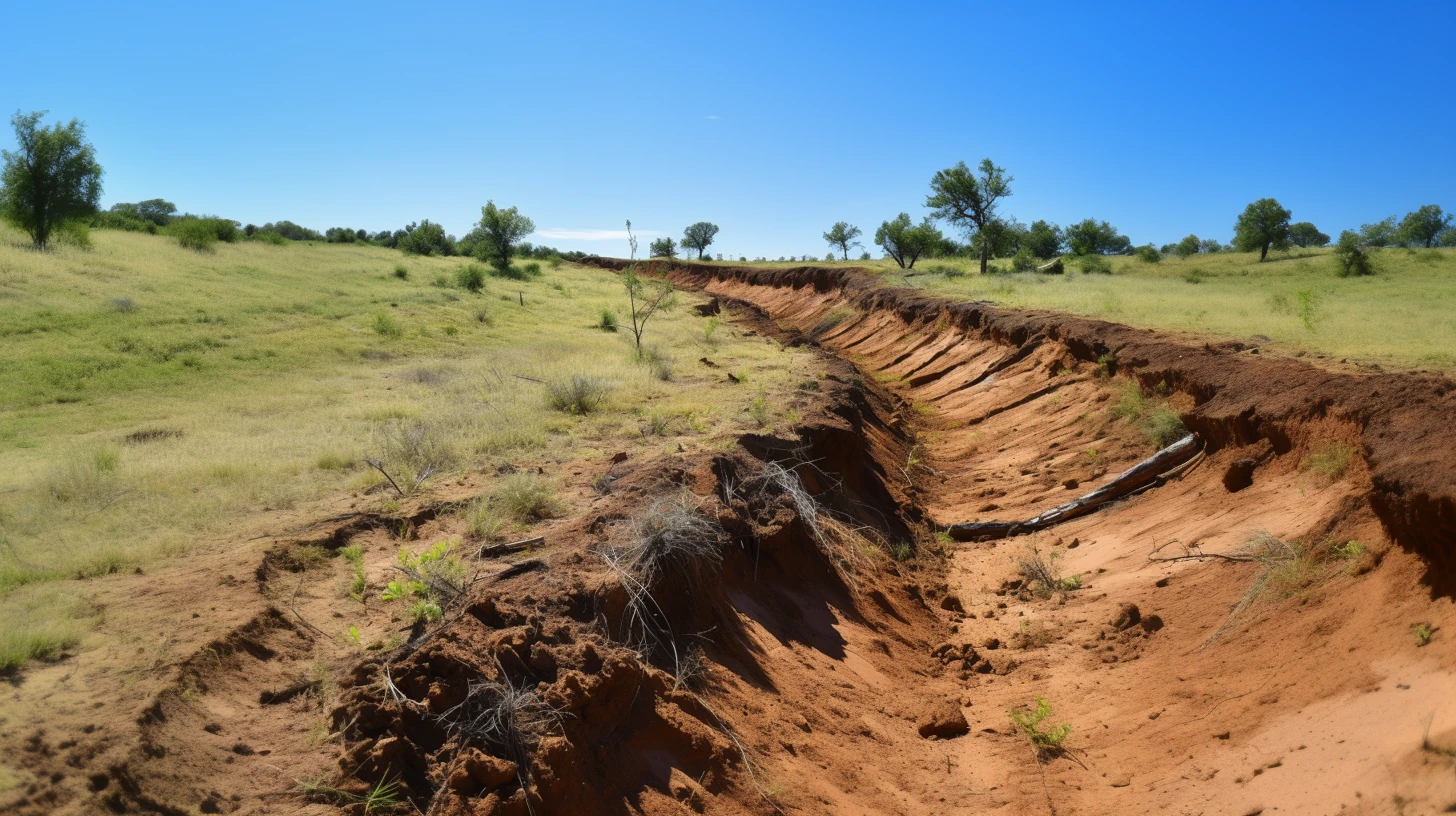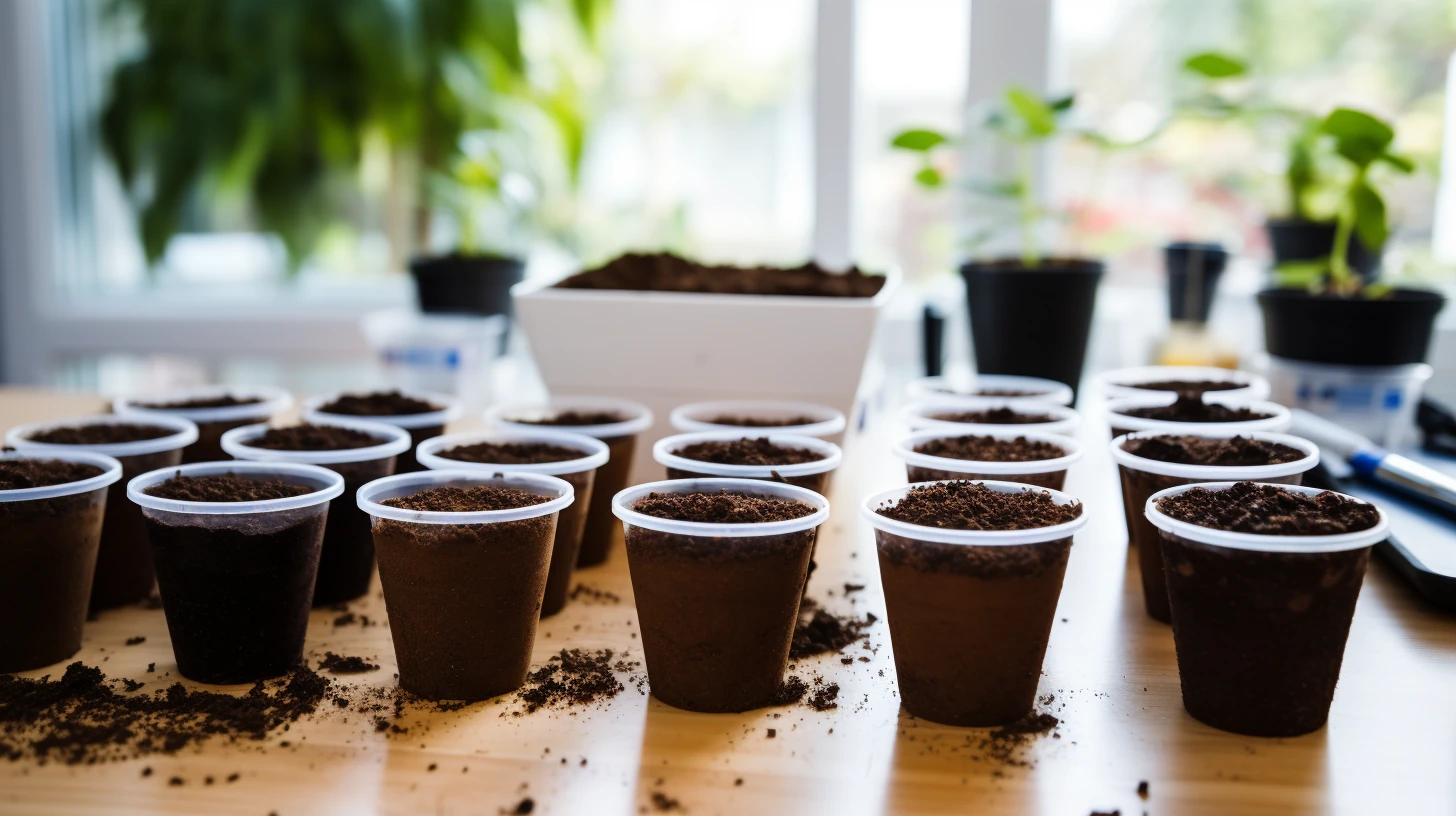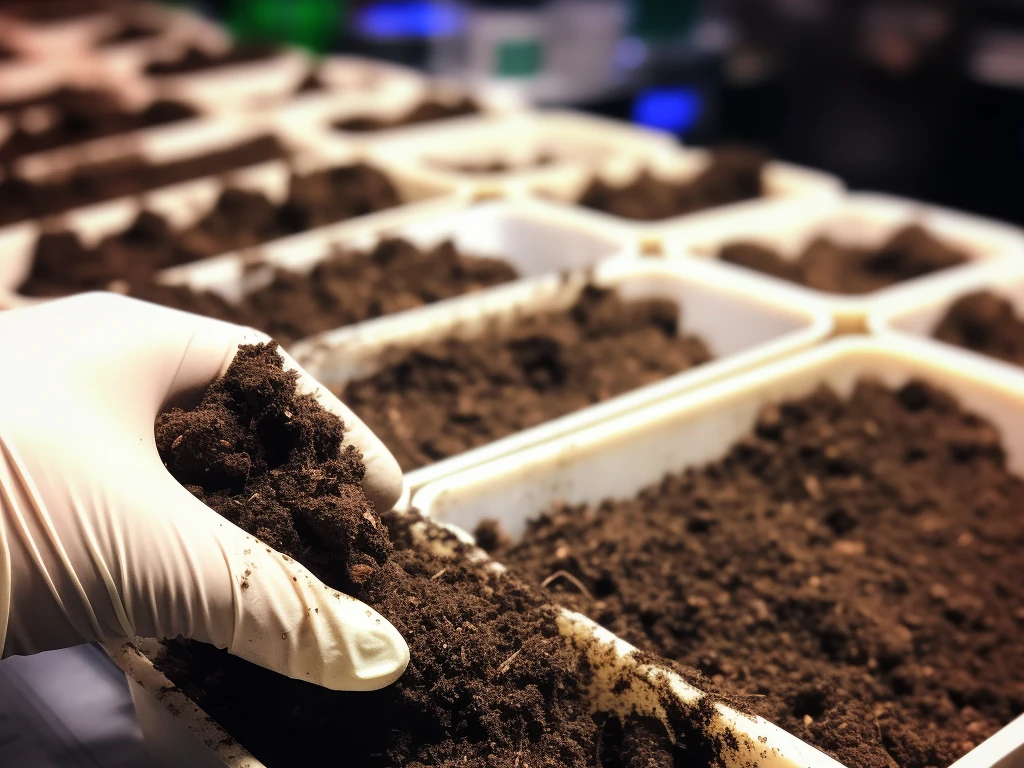Soil is indispensable to our existence and the health of our planet, offering vital ecosystem services. It serves as a natural filter for water and essential nutrients for plants to grow and supports agriculture. Healthy soil also provides a home to countless organisms, storing carbon, and preserving biodiversity. Beyond these ecological roles, humans utilize soil as a repository for solid waste, a filtration system for wastewater, and the very foundation upon which our cities and towns are built. Unfortunately, intensive farming, pollution, and deforestation have led to soil degradation in many areas. Soil recovery techniques have been proven to restore these damaged soils.
Soil recovery is essential because it can reverse the harm caused by human activities and bring degraded lands back to their natural state. This involves using effective methods to enhance soil structure, fertility, and overall soil health.
The purpose of this article is to recognize and explore some of these effective methods for reviving degraded soils, including sustainable agricultural practices like crop rotation and organic farming methods such as cover cropping and composting. Land restoration strategies through afforestation and reforestation are crucial for revitalizing degraded soils. By understanding the importance of healthy soil for life on our planet, we can actively use these effective methods to secure a greener and more sustainable future for all.

Understanding Soil Degradation
Soil degradation is a critical concern for land health and productivity, occurring when soil quality deteriorates, impacting plant growth and the overall ecosystem. Various factors contribute to soil degradation, including:
Erosion
Erosion washes or blows away the topsoil layer, often worsened by unsustainable agricultural practices.
Nutrient Depletion
Nutrient depletion results from continuous farming without essential nutrient replenishment like phosphorus, nitrogen, and potassium, reducing soil fertility over time.
Pollution
Pollution is another significant factor resulting from industrial activities to improper use of chemicals, which can contaminate soil.
In agriculture, the effect of degraded soil leads to lower crop yields, increased plant vulnerability to diseases, and lack of biodiversity. It can also contribute to water pollution and runoffs as contaminants enter groundwater. To help prevent soil degradation, we must adopt sustainable farming practices like crop rotation, cover cropping, and organic methods. Erosion control measures, like terracing and planting on slopes, can also help.
Understanding the importance of timely soil recovery, causes, and consequences is important for preserving soil health and ensuring long-term sustainability for agriculture and ecosystems.

Soil Assessment and Monitoring
Soil assessment and monitoring are essential for understanding soil health and nutrient deficiencies. Soil tests reveal important factors like pH, organic matter, and nutrient levels, helping us make smart choices about the specific needs of the soil such as fertilizers and improvements. Understanding a site’s soil characteristics and limitations helps us pick the most effective methods for success.
Long-term monitoring involves tracking changes in soil quality over time, showing the effects of soil recovery efforts. Proper assessment also helps pick the right recovery methods for degraded or contaminated soils, whether it’s remediation like phytoremediation or conservation practices like crop rotation or cover cropping.
With good soil assessment and ongoing monitoring, we can manage our soils wisely for optimal productivity and minimize environmental impacts at the same time.

Soil Erosion Control and Prevention
Soil erosion is a significant global issue, leading to environmental and agricultural challenges. Effective erosion control measures are vital to safeguard soil quality and prevent topsoil loss, including:
Terracing
Terracing, which involves creating horizontal steps on slopes, helps slow water flow and prevent soil washout. It reduces the impact of soil runoff by enabling water infiltration.
Contour Plowing
Contour plowing, a technique where plowing occurs across slopes rather than up and down, reduces runoff and promotes better soil absorption, which helps to minimize erosion by preventing water from gaining momentum as it flows downhill, significantly reducing water runoff and promote better water absorption into the soil.
Vegetation Cover
Maintaining adequate vegetation cover, such as planting grasses and trees, stabilizes structure of the soil with their roots and prevents wind erosion in arid regions. Plus, vegetation cover acts as a natural shield against wind erosion, this is especially true in arid regions where strong winds can readily transport loose topsoil.
Soil Structure
Improving soil structure through methods like adding organic matter, enhancing fertility, and stimulating microbial activity also enhances soil’s resistance to erosion. These practices help in mitigating the negative effects of soil erosion on agriculture and the environment, supporting sustainable land use.

Soil Organic Matter Restoration
Soil organic matter plays a very important role in sustaining soil structure and its fertility. It consists mostly of decomposed materials from plants and animals, such as leaves, roots, and animal manure. This organic matter is essential for enhancing the soil’s quality and its capacity to retain vital elements necessary for robust plant growth, including water, air, and nutrients.
Increasing soil organic matter content can be done through effective composting and mulching. Composting refers to an approach in which it transforms organic waste into nutrient-rich humus, this nutrient-rich humus can be reintegrated back into the soil. Meanwhile, mulching involves shielding the soil with materials like wood chips to prevent erosion and maintain moisture levels of the soil. These practices not only promote soil health, but also enhance agricultural productivity and sustainably.
Another method to boost soil carbon content involves the use of cover crops and green manure. Cover crops are specifically grown to shield the soil during challenging periods of inactivity, or between cash crop rotations. These cover crops serve a dual purpose, they prevent erosion while simultaneously adding organic matter when integrated into the soil. Other approach, such as green manure refers to the cultivation of particular plants that are later plowed under while still green, providing the soil with a source of nitrogen and carbon.
By adopting these practices, farmers can effectively enhance soil organic matter levels. This restoration not only improves overall soil health but also enhances agricultural productivity in a sustainable manner.
Nutrient Management and Fertilization
Balancing soil nutrient levels through targeted fertilization is crucial for promoting plant growth and maintaining soil health, benefiting both farmers and gardeners.
Commonly used fertilizers fall into two main categories: organic and mineral. Organic fertilizers, such as compost and manure, serve a dual purpose by supplying nutrients and improving soil structure and microbial activity, which has long-term benefits for the soil.
Conversely, mineral fertilizers are chemically manufactured to offer precise nutrient control, addressing specific deficiencies in crops.
Precision agriculture is an agricultural approach using technology such as sensors and satellite imagery, to optimize the use of fertilizer. This approach identifies soil fertility variations across fields, enabling more efficient fertilizer application by targeting nutrient-deficient areas and avoiding unnecessary application in nutrient-rich areas.
Through precision agriculture and a mix of organic and mineral fertilizers, farmers can promote plant growth, maintain soil health, while at the same time reducing the environmental footprint linked to excessive fertilizer application.

Soil Bioremediation
Soil bioremediation is viewed as a sustainable and environmentally friendly approach to remediating soil pollution. It utilizes natural processes and microorganisms to detoxify pollutants and rejuvenate the health of contaminated soils.
Several bioremediation techniques can be employed for remediating contaminated soil. Phytoremediation, a well-known approach, involves the cultivation of specific plant species capable of absorbing and accumulating contaminants from the soil into their tissues. These plants can be harvested and safely disposed of, eliminating pollutants from the environment.
Microorganisms are also vital in soil bioremediation, capable of converting harmful substances into less toxic forms through certain processes like bioconversion or biodegradation. These microorganisms can occur naturally or through intentional inoculation with specific strains.
Bioremediation of Oil-Contaminated Soil: A South African Case Study.
Soil bioremediation case studies offer insights into the effectiveness of this eco-friendly approach to clean up polluted soil. These studies select sites with different pollution levels for remediation using bioremediation techniques.
In a 1990 case study, a former industrial site in Hammarsdale, South Africa was contaminated with heavy metals and petroleum hydrocarbons. The area was heavily contaminated, covering over two hectares, with oil penetrating soil over three meters deep. Traditional soil removal was costly and not feasible due to limited disposal options. However, with bioremediation, specific strains of bacteria were introduced into the soil to enhance the degradation of the contaminants.
Site investigations indicated that in situ remediation might be feasible due to the sandy soil’s high permeability and low heavy metal concentrations. Laboratory tests demonstrated that indigenous microorganisms, when stimulated by nutrient supplementation at specific C:N:P ratios (between 10:1:1 and 20:1:1), could degrade total petroleum hydrocarbons at an average rate of 11%.
Further research focused on cost-effective methods to improve soil quality and reduce remediation expenses. This included testing commercial surfactants (Arkopal N-050, N-060, E2491) and a natural solubilizer (soybean lecithin) for biotoxicity, solubilization, and biodegradability at various concentrations (0.01 – 1.0%). E2491 was selected as the preferred surfactant for soil washing, while lecithin was considered more suitable for in situ use due to its localized solubilizing effect, natural origin, and nutritional benefits. Fungi were explored for addressing persistent organic compounds, especially heavy oil fractions, which bacterial methods struggled to remediate effectively. These techniques use microorganisms like bacteria or fungi to convert pollutants into less harmful substances by utilizing soil bioremediation approaches.
Bioremediation of Oil Contaminated Soil in South Santhal CTF, Mehsana, India: A Case Study
Bioremediation has been effectively applied in restoring areas affected by oil spills. The safe disposal of hazardous wastes has become a significant challenge due to stringent regulatory requirements and environmental responsibilities.
Specialized bacterial consortium composed of four bacterial species was created to efficiently biodegrade various fractions of total petroleum hydrocarbons in the South Santhal site. This consortium has the potential to treat substantial amounts of oily sludge and extensive areas of land contaminated by oil spills, ensuring safe disposal of these pollutants and a quicker recovery of affected ecosystems.
In just 135 days of treatment, the oil-contaminated soil’s total petroleum hydrocarbon (TPH) levels decreased significantly by approximately 91% at three different sites. In contrast, compared to the control site, which did not undergo bioremediation treatment, showed negligible TPH degradation. This demonstrates the effectiveness of biodegradation techniques in treating oil contamination.
Overall, soil bioremediation method shows significant promise in addressing environmental challenges related to soil contamination. As ongoing research continues to advance in this field, we anticipate further developments in technology and methods that will lead to even more successful cleanups in the future.

Soil Microbial Inoculants
Soil microbial inoculants are key to soil recovery and overall soil health improvement. Comprised of beneficial microorganisms, they are introduced into the soil with the goal of improving its nutrient cycling and promoting plant health.
Farmers can harness microbial communities to increase soil resilience. By incorporating specific strains of bacteria, fungi, or other microorganisms, they form symbiotic relationships with plants, aiding nutrient absorption and disease protection. You can assess these microbial interactions through RhizeBio’s Comprehensive Soil Testing. Additionally, they help with organic matter decomposition, releasing valuable nutrients back into the soil.
The application of microbial inoculants improves nutrient availability, raises crop yields, and promotes soil structure, making it especially beneficial for degraded or nutrient-deficient soils.
Agroforestry and Afforestation
Trees play a substantial role in soil rehabilitation and the prevention of erosion. Agroforestry and afforestation are pivotal for sustainable land management and environmental protection. Trees’ extensive root networks effectively bind the soil, mitigating erosion from wind and water runoff.
Within agroforestry, trees are thoughtfully incorporated into agricultural setups to deliver many advantages. They can promote soil fertility, enhance water retention, and provide shade for crops or livestock. Agroforestry systems further support biodiversity by establishing habitats for numerous plant and animal species.
Afforestation can be considered a form of agroforestry in which trees are planted in blocks or designated areas. Afforestation, often referred to as plantation forestry, involves planting trees on land, usually agricultural, that has remained non-forested for a period exceeding 50 years, in accordance with the Kyoto Protocol.
Afforestation initiatives aim to rehabilitate deteriorated lands by introducing trees to regions affected by deforestation or other forms of land damage. This approach promotes biodiversity, carbon dioxide absorption, and helps mitigate the negative effects of climate change.
Through the combination of agroforestry systems and the right execution of afforestation projects, we can actively participate in sustainable land management. Simultaneously, we can tackle environmental issues like soil degradation, erosion, and the decline of biodiversity. The RhizeBio report offers information regarding biodiversity and functionality in soil.
Soil Reclamation in Urban Areas
Reclaiming soil in urban areas poses unique difficulties due to intensive human activity and limited space. Urban environments often contend with issues like soil degradation, contamination, and compaction, creating an inhospitable environment for plant growth.
Contamination stemming from industrial activities, pollution, and improper waste disposal represents a significant hurdle in soil recovery, requiring meticulous assessment and remediation strategies to ensure soil safety for gardening and food production.
To address these issues, urban gardening and community-driven soil restoration efforts have been gaining momentum in the past decade. These initiatives involve local communities collaborating to revive abandoned plots or unused spaces for gardening. Through the adoption of sustainable practices such as composting, organic fertilizers, and crop rotation, these methods rejuvenate urban soils while at the same time fostering community involvement.
In addition to community efforts, sustainable practices are necessary for revitalizing urban soils for green spaces and food production. Techniques such as rainwater harvesting, raised beds, vertical gardening, and native plant use improve soil quality and maximize space. By embracing these practices and involving citizens in urban farming, cities can promote environmental sustainability and increase food security. Even more so, regenerating urban soils improves aesthetics and air quality through increased vegetation.
Addressing urban soil recovery challenges requires a multifaceted approach with community involvement and sustainable practices. Focusing on these strategies allows cities to transform degraded soils into vibrant green spaces, benefiting residents and the environment.
Collaborative Approaches and Government Initiatives
Revitalizing and safeguarding our soils, along with the life they support, represents one of the most beneficial win-win solutions at our disposal. Effective soil recovery and sustainable land management rely heavily on collaboration among stakeholders. Companies like RhizeBio, which specializes in soil health and biology, use advanced testing and genomics to enhance soil biology, helping stakeholders make informed decisions about soil health and understand its various aspects.
When various groups, including farmers, scientists, policymakers, and environmental organizations, together with agricultural leaders join forces, they can combine their knowledge and assets to create inventive solutions.
Government policies are equally vital for soil restoration, they’re recognized globally for preserving soil health and often include incentives for sustainable farming or responsible soil use regulations. Unlike water and air, soil lacks a unified policy instrument, and policy making sometimes remains intricate and fragmented.
Apart from government efforts, promoting community awareness is vital for sustainable land management. Educating people about soil conservation helps them make informed decisions that benefit soil health. Community engagement also creates a sense of responsibility for the environment, encouraging active participation in conservation.
These collaborative approaches and supportive policies are the most crucial for effective soil recovery and long-term sustainability. Together, with community involvement, we can safeguard our soils for future generations.

Conclusion
In conclusion, soil recovery is pivotal for rejuvenating degraded lands and contributing to environmental conservation. It enhances fertility, water retention, nutrient cycling, and biodiversity, benefiting agriculture and ecosystem preservation. Soil recovery aids in carbon sequestration, reducing greenhouse gas emissions and bolstering climate resilience. Recognizing these benefits and actively pursuing soil recovery on degraded lands is the first step toward environmental sustainability. Collaboration among governments, farmers, organizations, and individuals is pivotal for adopting sustainable land management practices that prioritize soil health. Investing in soil recovery is a beneficial investment in our future to make sure of food security, biodiversity protection, climate change mitigation, and a sustainable world for generations to come.
Contact RhizeBio today to assess and enhance your soil’s health. Together, we can work towards a healthier, more sustainable future.
